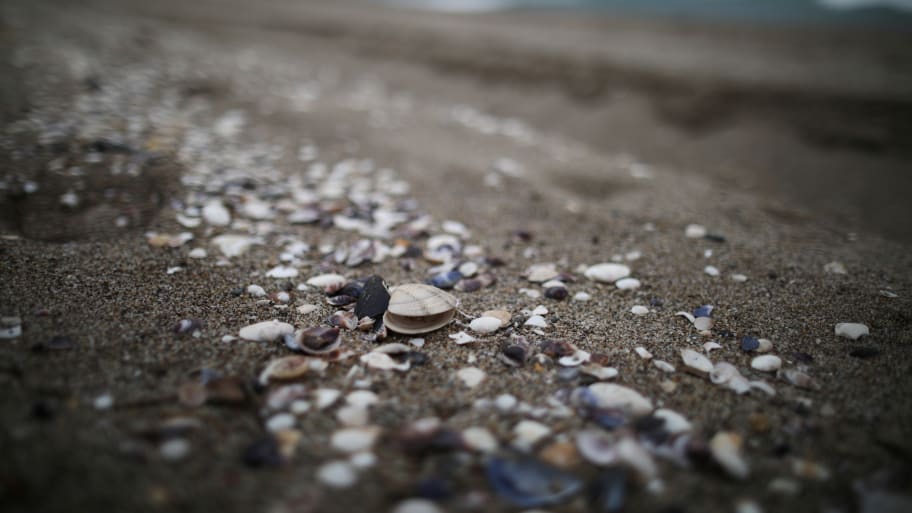movetheboat
Well-Known Angler
Republicans call for raising the retirement age: Some GOP back plan to make 'future generations' work longer to stop Social Security and Medicare funds running out
Republicans call for raising the retirement age
Follow along with the video below to see how to install our site as a web app on your home screen.
Note: This feature may not be available in some browsers.






Pentagon believes alien mothership could be eyeing Earth
Government officials stated a possible alien “parent craft” could release “many small probes” on Earth.www.yahoo.com

they're up in the Mothership...................What ever happened to the Murder Hornets?




Constant battle when the affluent rub elbows with the common folk.Billionaires Lose Battle to Block Nantucket Clam Shack
SHUCK IT!
Noah Kirsch
Wealth And Power Reporter
Published Mar. 17, 2023 5:13PM ET

REUTERS/Kim Hong-Ji
Several ultra-rich property owners on Nantucket, the island near Cape Cod, have lost their initial battle to prevent a clam shack from opening near their homes. The disgruntled residents include finance billionaires Charles Schwab and Charles Johnson, along with their spouses; their attorney had argued that the proposed licenses would “destroy the ambience” of the area and “substantially interfere with my clients’ peaceful residential use of their property.” Sadly for them, the Nantucket Select Board voted 3-1 in favor of the business. But the conflict may not be over. “Maybe the billionaires will sue everyone and then #occupynorthwharf and we will make ‘Clam Guevara’ T-shirts,” one of the proprietors reportedly said before the vote.
So the great whites will switch to swimmers.Poor Andre and his Friends, but I'm thinking not many here, especially those around Cape Cod, will be feeling much remorse...
Scientists Investigate a Bird Flu Outbreak in Seals
Wild birds passed the virus to seals in New England at least twice last summer, a new study suggests.
Last summer, the highly contagious strain of avian influenza that had been spreading through North American birds made its way into marine mammals, causing a spike in seal strandings along the coast of Maine. In June and July, more than 150 dead or ailing seals washed ashore.
Now, a study provides new insight into the outbreak. Of the 41 stranded seals tested for the virus, nearly half were infected with it, scientists reported on Wednesday in the journal Emerging Infectious Diseases. It is likely that wild birds introduced the virus to seals at least twice, the researchers concluded. In several seals, the virus had mutations that are associated with adaptation to mammals.
The risk to humans remains low, and the seal outbreak waned quickly, the scientists said.
“It was a dead-end event, as far as we can tell,” said Kaitlin Sawatzki, a postdoctoral researcher at the Cummings School of Veterinary Medicine at Tufts University and an author of the new paper. “The virus that entered into those seals has not persisted.”
But the report comes amid growing concerns that the virus, which has already caused the largest bird flu outbreak in the nation’s history, could adapt to spread more efficiently among mammals, potentially sparking a new pandemic.
It remains unclear whether the seals were spreading the virus to one another or primarily picking it up from birds. But the number of affected seals suggests that either the virus spreads easily among the marine mammals or that the barrier for bird-to-seal transmission is low.
“We truly don’t know if it’s transmitting from bird to seal, bird to seal, bird to seal 100 times over or if it’s going into a couple of seals and then spreading,” said Wendy Puryear, a virologist at the Tufts veterinary school and an author of the new paper. “Both are possible,” she added. “Neither are great.”
Either scenario calls for closer monitoring of seals, said David Stallknecht, an expert on wildlife diseases and influenza at the University of Georgia, who was not involved in the research.
“We need to just keep our eyes on them,” he said. “The easiest way to tell if this persists in seals is to keep testing them.”
The current version of H5N1 has become unusually widespread in wild birds and has spilled over repeatedly into mammals, including bobcats, raccoons and foxes. Scientists believe that most wild mammals are contracting the virus directly from birds.
But a bird flu outbreak on a Spanish mink farm last fall suggested that the virus could spread efficiently among some mammalian species. And a mass die-off of sea lions in Peru has raised concerns that marine mammals might be spreading the virus to one another, too.
Seals are known to be susceptible to avian influenza, and other versions of the virus have previously caused outbreaks in the animals.
The new study is a collaboration between researchers at several academic institutions and wildlife organizations, including Marine Mammals of Maine and New England Wildlife Centers, as well as federal scientists.
The researchers collected samples from 1,079 wild birds and 132 gray seals and harbor seals stranded along the North Atlantic coast from Jan. 20 to July 31, 2022. “That gave us a really powerful ability to see what is happening in the birds and the seals in the same time in the same region,” Dr. Puryear said.
There were two waves of flu in wild birds, the researchers found. The first, which peaked in March 2022, primarily affected raptors, while the second, which began in June, hit gulls and sea ducks known as eiders.
No seals tested positive for avian influenza during the first wave of bird infections. But during the summer stranding event, 19 of 41 seals tested positive.
The researchers found two slightly different versions of the virus in the seals. One matched what was circulating in terns, while the other resembled what was circulating in a broader array of birds, including gulls and eiders. The finding suggests that the virus spilled over at least twice.
Because these seals do not typically eat birds, the scientists suspect that the animals are picking up the virus from the environment, perhaps through contact with bird droppings.
Viral samples from the seals also had mutations that were rare or absent in birds. Three seal samples had mutations that have been shown to improve viral replication or increase virulence in mammals.
Such mutations are not unique. In another recent study, a team of Canadian scientists found the same mutations in some viral samples taken from bird-flu-infected foxes. “When there’s a bird-to-mammalian spillover event, they seem to be acquired to pretty quickly,” Dr. Sawatzki said.
The presence of these mutations is not, in and of itself, a reason to “sound the alarm,” Dr. Stallknecht said. But continued surveillance is necessary not only to safeguard human health but also to protect wild animals from a virus that has already proved devastating.
“These emerging diseases need to be looked at on a bigger scale than just ‘pandemic potential,’” he said, “because they affect a lot of other species on the globe.”
